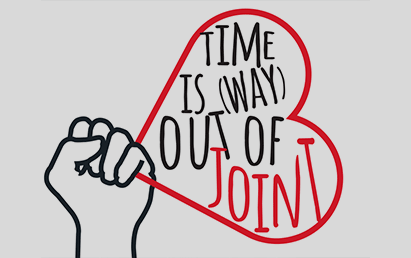Foster youth are well versed in exposure to and overcoming a variety of traumas and have often developed and relied on both individual and cultural assets. What has been emphasized less is how these traumatic experiences are interrelated with oppression from their community and structural racism in our systems.
Background and preliminary data
Every day, arbitrary societal standards base a person’s race, ethnicity, sexual orientation and income as an influential factor in which the quality and intensity of suffering is determined, worsening long-standing health disparities (Williams, Priest, & Anderson, 2016). The stress of the pandemic and the resulting economic devastation, impairment of healthy coping mechanisms, and social isolation create a perfect storm, affecting entire family systems and exacerbating existing health issues while also creating new ones. The U.S. is simultaneously at a point of reckoning regarding the systemic and institutional racism that has always plagued our country. The intersection of these two major stressors—pandemic and systemic subjugation—is resulting in devastating biopsychosocial-spiritual health consequences for Black, Indigenous and People of Color (BIPOC) communities living in the United States.
Foster youth live in the eye of the storm and are at risk for the most significant consequences to both their short- and long-term well-being. The child welfare system reflects, maintains, and perpetuates racism in the U.S. The simple and constant overrepresentation of youth of color in care offers a clear measure of the profound systemic and structural biases that target families of color (National Academies of Sciences, Engineering, and Medicine, 2017). The multi-generational effects of structural racism increase risk of maltreatment, while racial injustices in the child welfare systems result in more removals, longer stays, and troubling foster care experiences for children of color (Fluke, Harden, Jenkins, & Ruehrdanz, 2010).
In the midst of Shelter in Place (SIP) due to COVID-19, the health disparities that already existed for BIPOC communities are heightened, exacerbating differential biopsychosocial-spiritual impacts along lines of race and class. Privilege and power positions, documentation status, access to adequate healthcare, and housing environments impact individual and familial biopsychosocial-spiritual wellness under usual circumstances.
During SIP, impoverished communities of color are often faced with the impossible choice between providing basic necessities and showing up to fulfill their essential job duties, thereby directly increasing their risk of contracting the disease and spreading it to their families (van Dorn, Cooney, & Sabin, 2020). In addition to exposure risk, these same families must also navigate school closures and potentially leaving their children unattended for many hours.
 Children in the child welfare system depend on social and educational systems to meet essential needs for daily life. School programming is often utilized to meet educational requirements as well as their physical and mental health nourishment, by way of nutrition and mental health services. For example, 35% of adolescents from 2012-2015 exclusively accessed mental healthcare in school settings; that proportion goes up even higher for Black and Latinx students (Golberstein, Wen, & Miller, 2020). One recent survey found that more than half of foster youth surveyed reported COVID-19 had adversely affected their mental health, with 56% reporting clinically significant levels of anxiety or depression (Greenson, Jaffee, & Wasch, 2020). Yet, researchers report that only a small minority of foster children ever receive mental health services, and those who are ethnic minorities are the least likely (Larsen, Baste, Bjørknes, Myrvold, & Lehmann, 2018).
Children in the child welfare system depend on social and educational systems to meet essential needs for daily life. School programming is often utilized to meet educational requirements as well as their physical and mental health nourishment, by way of nutrition and mental health services. For example, 35% of adolescents from 2012-2015 exclusively accessed mental healthcare in school settings; that proportion goes up even higher for Black and Latinx students (Golberstein, Wen, & Miller, 2020). One recent survey found that more than half of foster youth surveyed reported COVID-19 had adversely affected their mental health, with 56% reporting clinically significant levels of anxiety or depression (Greenson, Jaffee, & Wasch, 2020). Yet, researchers report that only a small minority of foster children ever receive mental health services, and those who are ethnic minorities are the least likely (Larsen, Baste, Bjørknes, Myrvold, & Lehmann, 2018).
Foster youth are well versed in exposure to and overcoming a variety of traumas and have often developed and relied on both individual and cultural assets. What has been emphasized less is how these traumatic experiences are interrelated with oppression from their community and structural racism in our systems. A recent survey of former foster youth, the majority of whom (76%) identified as youth of color, explored whether they thought their experiences as current and former foster youth were unique during COVID-19 and SIP (Ruff, Hebbala & Vega, 2020). For the most part, survey respondents did feel that they and other former foster youth were uniquely affected. They reported significant increases, from before to during SIP, in their level of concern about their physical, financial, social, relational, and psychological well being, and anticipated maintained concern in the year following SIP. A few quotes from participants illustrate their thoughts:
When it comes down to it, people will worry for their own families which is completely understandable, but I’m afraid people will most likely forget about those without one. Especially during this crisis.
It can put you homeless in a matter of days. There is not a familial safety net and those in foster care rely heavily on the governmental assistance. In essence our livelihoods are tied to assistance from the government.
Not only are their certain socioeconomic factors that put me and my peers at a greater risk for contracting the virus but it is a lot harder to limit contact with people and/or shelter in place when you don’t have those close family members willing to take you in like other people do.
Other participants said that they thought they may have learned some helpful coping skills during their time in foster care that may help them adapt more easily now, as exemplified below:
The uncertainty and isolation are very familiar to me which makes coping somewhat easier, although it also brings up a lot of older coping strategies and thought patterns that I need to consciously fight against. Also being in foster care taught me how to survive, which makes living through a pandemic a little easier.
To affect any meaningful changes within our U.S. healthcare and child welfare systems, these foster youth need to be heard, and empowered to be the agents for change.
Implications for research and practice: Next steps
Marriage and family therapists (MFTs) must use their power and privilege to act. Trained extensively as systemic thinkers and to be collaborative healthcare agents for change, MFTs are well prepared and positioned to support those with a history of child welfare involvement (Weir, Fife, Whiting, & Blazewick, 2008). Even more, trained in relational and situational trauma, MFTs are prepared to act now. But this action can occur only in partnership with a clear and evidenced commitment to challenging the barriers that uniquely affect communities of color.
Our current context and the interrelationship between the COVID-19 pandemic and the heightened awareness of racial injustices within our U.S. social and healthcare systems mean that any just outcomes will need economic reallocation from the existing power structure back to those who have been exploited and marginalized. As systemic therapists, we must not only support the clients we serve, but also address policy changes that challenge barriers of access to culturally responsive interventions. Afterall, in order to create second order and sustainable change, access to culturally relevant and responsive healthcare for all must be provided.
By the disparate effects of COVID-19 and SIP upon communities of color, we can see as clearly as ever the racist underpinnings of our political, economic, and societal institutions that need to be reimagined.
All healthcare worker training programs need to have a core value of making mental and medical health services widely accessible and inclusive and addressing health disparities through a biopsychosocial-spiritual framework (Willerton, Dankoski, & Martir, 2008). MFTs are trained to collaborate across professions and can increase their capacity as first responders so they may intervene in mental health crises without relying exclusively on police. We can embrace the challenge of making telehealth work as a potentially more accessible provision of healthcare and outreach for many underserved communities. All the while, we must constantly cultivate cultural competence among professionals, and significantly improve diverse representation across professions. As a discipline, it is critical that systemic therapists further commit to prioritizing the advancement of therapists of color to leadership roles within the profession, making training programs affordable and accessible, supporting supervisors and faculty of color, and both creating and sustaining support networks for them to thrive (Erolin & Wieling, 2020; Hernández, Taylor & McDowell, 2009). Lastly, it is important for the field to celebrate our current and future MFT colleagues by not looking past the differences in which we all hold, but by celebrating them, harnessing divergences in perspectives and experiences which will only broaden the scope at which the field of MFT can support all communities.
MFT researchers must prioritize the voices and experiences of those who have historically been silenced, not simply as participants, but as co-creators of research questions, methodologies, and publication. Deep-seated biases have historically influenced participant engagement in the research community, creating barriers that have systematically silenced or exploited the voices of the people (Sunderji, Nicholas Angl, Polaha, & Gao 2019). Understanding research as a form of civic engagement, Shamrova and Cummings (2017) wrote: “a parallel exists between the lack of children’s participation in research and the level of their participation in society” (p. 400). While it is not the responsibility of the oppressed to challenge oppressive systems, we must support research processes that empower youth and bring their questions and voices to the forefront, as co-creators of scientific knowledge. In addition, a pivot toward focusing on the assets and strengths of these youth and families will lead to more respectful and relevant interventions. These are just the first steps toward culturally relevant knowledge with the potential of meaningful action on issues that have, for too long, been overpowered by deficit-oriented, pathologizing—but readily fundable—outcome research (Jacquez, Vaughn, & Wagner, 2013; Ruff & Harrison, 2020; Wallerstein & Duran, 2010). As MFTs, we can embrace the complexity of human experience, and orient towards relational outcomes of well-being.
By the disparate effects of COVID-19 and SIP upon communities of color, we can see as clearly as ever the racist underpinnings of our political, economic, and societal institutions that need to be reimagined. Systemic racial structures, such as requiring an individual to have a mental health diagnosis and meet pathologizing eligibility criteria as a precondition for care, need to be abandoned and replaced. MFTs get this and therefore, must be leaders in child welfare, working to build a workforce that is diverse on every axis from lived experiences to race and ethnicity to sexual orientation to healthcare approach. Racial and socio-economic policy barriers to foster care and adoption should be assessed, as well as the policies causing a disproportionate number of BIPOC to be placed into the foster system in the first place (Weinstein et al., 2017).
The multi-generational effects of structural racism, and racial injustices in the implementation of child welfare systems are very much a part of the current situation that create the opportunity for MFTs to lead as systemic change agents. The lethal manifestations of racial injustice that currently have millions of young people in the streets, despite the pandemic, should inspire us all to act in whatever way we can, even if only to commit to doing personal work to root out our own biases. The vast majority of foster youth were born into families and communities plagued by multi-generational poverty and its corrosive effect (McGuinness & Schneider, 2007). We must recognize that the combination of pandemic and confronting injustice will have generational effects—and accept the challenge of building generational solutions, over the long-term. We, as MFTs, trained in systems theory to believe that our whole is greater than the sum of our parts; that we can do this work together, support each other and hold each other accountable to examine our own insecurities and harness the information learned to lift up and support our foster youth. To quote the revolutionist, Angela Davis, “when the people who have suffered …..when they begin to rise, the whole world will rise with them.”

Deanna Linville, PhD, LMFT, is an AAMFT Clinical Fellow and Approved Supervisor. She is currently an associate professor at the University of Oregon, the director of Clinical Programs at A Home Within, and has published articles that address health disparities and the accessibility of quality healthcare. She has maintained a private practice providing direct clinical and consultation services for the past 17 years.

Saralyn Ruff, PhD, LMFT, is an assistant professor at the University of San Francisco, and the director of the Foster Care Research Group where she researches mental health services, focused on barriers to treatment and effective intervention with current and former foster youth. She has also served as a research consultant for A Home Within for the past 10 years.

Felicia Gutierrez, BS, is a current graduate student in the Couple’s and Family therapy program at the University of Oregon. In addition to her engagement in her graduate program and research, she works as a clinical assistant at A Home Within. Gutierrez hopes to continue her journey in higher education with a focus on health disparities specific to racist systems and societal perceptions.
REFERENCES
Erolin, K. S. and Wieling, E. (2020). The experiences of couple/marriage and family therapists of color: A survey analysis. Journal of Marital and Family Therapy, 00, 1-18. doi: https://doi.org/10.1111/jmft.12456
Fluke, J. D., Harden, B. J., Jenkins, M., & Ruehrdanz, A. (2010). Research synthesis on child welfare disproportionality and disparities. In P. McCarthy (Ed.), Disparities and disproportionality in child welfare: Analysis of the research (pp. 1–93). Washington, DC: Center for the Study of Social Policy.
Golberstein, E., Wen, H., & Miller, B. F. (2020). Coronavirus disease 2019 (COVID-19) and mental health for children and adolescents. JAMA Pediatrics. doi:10.1001/jamapediatrics.2020.1456
Greenson, J., Jaffee, S., & Wasch, S, (2020). The experiences of foster youth during COVID-19. The Field Center for Children’s Policy, Practice, and Research. Retrieved from https://fieldcenteratpenn.org/wp-content/uploads/2020/05/Foster-Youth-COVID-19-One-Pager-FINAL.pdf
Hernández, P., Taylor, B., & McDowell, T. (2009). Listening to ethnic minority AAMFT approved supervisors: Reflections on their experiences as supervisees. Journal of Systemic Therapies, 28, 1, 88-100.
Jacquez, F., Vaughn, L. M., & Wagner, E. (2013). Youth as partners, participants or passive recipients: A review of children and adolescents in community-based participatory research (CBPR). American Journal of Community Psychology, 51, 176-189. doi.org/10.1007/s10464-012-9533-7
Larsen, M., Baste, V., Bjørknes, R., Myrvold, T., & Lehmann, S. (2018). Services according to mental health needs for youth in foster care: A multi-informant study. BMC Health Services Research, 18(1), 634.
McGuinness, T. M., & Schneider, K. (2007). Poverty, child maltreatment, and foster care. Journal of the American Psychiatric Nurses Association, 13(5), 296-303.
National Academies of Sciences, Engineering, and Medicine. (2017). Communities in action: Pathways to health equity. Health and Medicine Division, Board on Population Health and Public Health Practice, Committee on Community-Based Solutions to Promote Health Equity in the United States. Washington, DC: National Academies Press.
Ruff, S. C., & Harrison, K. (2020). “Ask Me What I Want”: Community-based participatory research to explore transition-age foster youth’s use of support services. Children and Youth Services Review, 108. doi.org/10.1016/j.childyouth.2019.104608
Ruff, S., Hebbala, S., Vega, Y., (2020). Perspectives of current and former foster youth during COVID-19: Preliminary report. Retrieved from https://www.cwla.org/wp-content/uploads/2020/07/USF-FCRG-FY-Covid-Survey-2-July-2020.pdf
Shamrova, D. P., & Cummings, C. E. (2017). Participatory action research (PAR) with children and youth: An integrative review of methodology and PAR outcomes for participants, organizations, and communities. Children and Youth Services Review, 81, 400-412.
Sunderji, N., Nicholas Angl, E., Polaha J., Gao, C. (2019). Why and how to use patient-oriented research to promote translational research. Family, Systems & Health, 37(1), 1-9. doi:10.1037/fsh0000405
Wallerstein, N., & Duran, B. (2010). Community-based participatory research contributions to intervention research: The intersection of science and practice to improve health equity. American Journal of Public Health, 100(Suppl 1), S40-S46. doi.org/10.2105/AJPH.2009.184036
Weir, K., Fife, S., Whiting, J., & Blazewick, A. (2008). Clinical training of MFTs for adoption, foster care, and child development settings: A comparative survey of CACREP, COAMFTE, and CSWE accredited programs. Journal of Family Psychotherapy, 19, 277-290.
Willerton, E., Dankoski, M. E., & Martir, J. F. S. (2008). Medical family therapy: A model for addressing mental health disparities among Latinos. Families, Systems, & Health, 26(2), 196-206. doi.org/10.1037/1091-7527.26.2.196.
Williams, D. R., Priest, N., & Anderson, N. B. (2016). Understanding associations among race, socioeconomic status, and health: Patterns and prospects. Health Psychology, 35(4), 407.
van Dorn, A., Cooney, R. E., & Sabin, M. L. (2020). COVID-19 exacerbating inequalities in the US. Lancet (London, England), 395(10232), 1243.
Other articles
Harvesting Hope for 2021
Hope is a natural complement to the practice of MFT—a discipline that prioritizes systemic strength and health, as opposed to more individual therapy modalities that are focused on psychopathology and dysfunction. Many MFT classic models have traditionally had a hopeful focus, attempting to highlight positive aspects of relationships.
Eli Karam, PhD
Therapeutic Activism
Family therapists have long used anomalies in therapy as the sparkling moments to generate workable goals and lasting change. For systemic thinkers, the anomalies of 2020 can catalyze our collective change, away from political neutrality and into sincere and compassionate political activism.
Lorien S. Jordan, PhD
Time is (Way) Out of Joint: On Systems, Politics, and Truth
It’s getting more difficult to set aside the notion of truth when untruth is such a powerful political weapon. Today, misinformation campaigns are targeting the nation’s confidence in many bedrock principles, such as the safety of vaccines and the trustworthiness of public health officials.
Aaron S. Cohn, PhD



